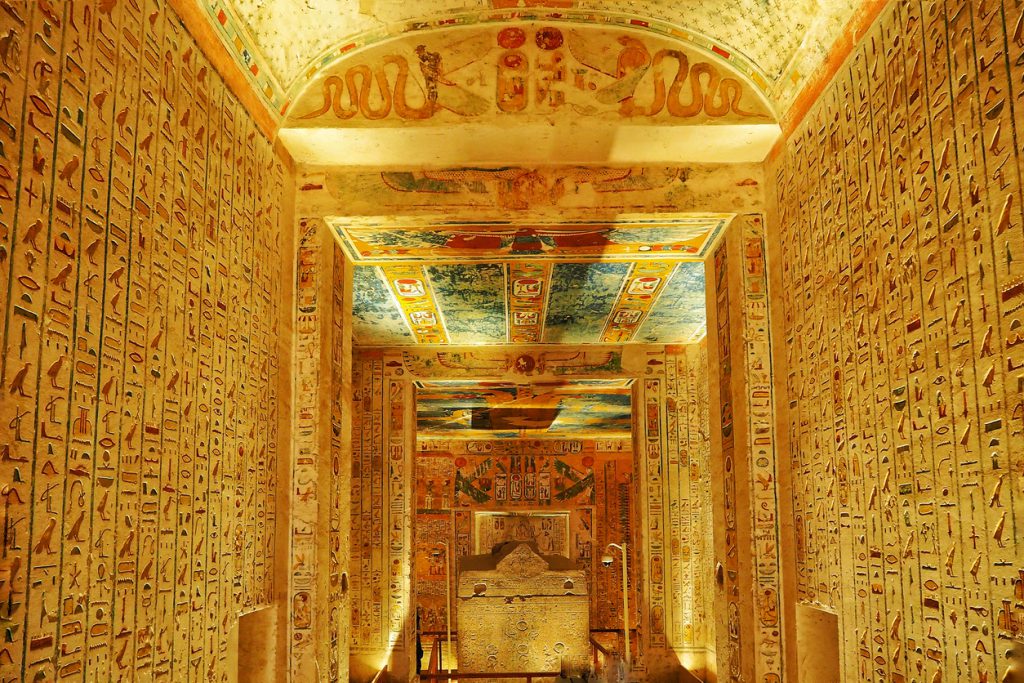Jeremy Naydler, Temple of the Cosmos: The Ancient Egyptian Experience of the Sacred, Inner Traditions, Rochester, VT, 1996.
“In ancient times,” Naydler writes, “space was experienced not simply as the condition of outwardness…but also as containing varying degrees of internality.” There were “vast and important regions of the cosmos that existed entirely inwardly and from which the external world derived.” It was, Naylor adds, “this experience of a non-subjective inner dimension to the world that nourished and sustained the ancient…worldview.” Pharaonic Egypt, according to Naydler, dwelled half on the far side of this once translucent, and at times even transparent, veil separating the material from the immaterial realms. In more modern times, however, that veil has usually become instead an impenetrable wall.
Egyptians, according to Naydler, were able to peer right through the physical landscape and tangible objects into the non-physical “internality” of the further dimensions within them. The god Geb symbolized the energies that lie behind and within the world of matter. The physical sun was, for example, the outward manifestation of the god Ra. Without these interior dimensions, the ancient Egyptians believed, the outer world would be just an empty husk. “Magic” in ancient Egypt and elsewhere, has always been based upon this interaction of the physical and non-physical in the interface sometimes called the “meta-physical.”
According to Naylor, the “underworld” through which they believed they traveled after the death of the physical body was less an “underworld” than an “inner world”. For the Egyptians, these dimensions opened up to them as the outer ones melted away. This interior realm, the “Dwat”, was, in turn, the womb from out of which the material world emerged. The energies found within the Dwat were the source of all external forms. The underlying sources of life were seen as expressing themselves from the “inner” into the “outer.”
According to Naylor, these two realms interpenetrated. Human beings were encouraged to look beyond the superficialities of material existence into the inner mysteries and underlying forces from which it all arose as spirit continuously unfolded into matter. Reflecting the kabbalah, the Egyptians spoke of a “World Tree” comprised of invisible energies, in the branches of which the entire tangible world came to exist, while the outer bodies of the gods took the form of stars.
